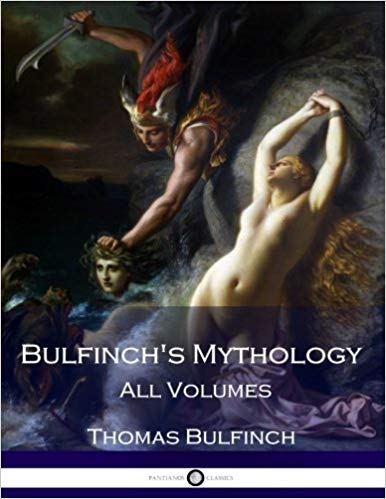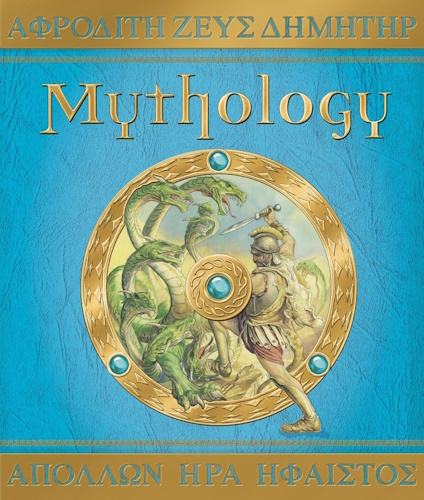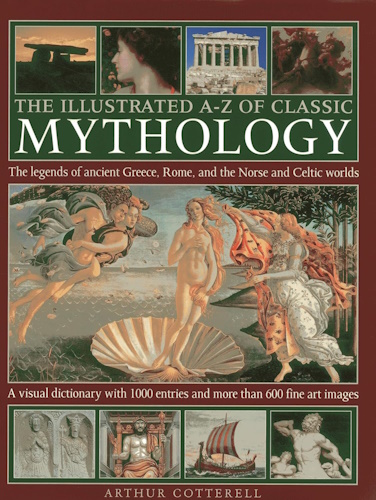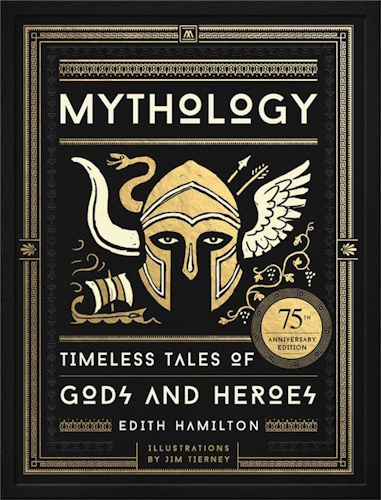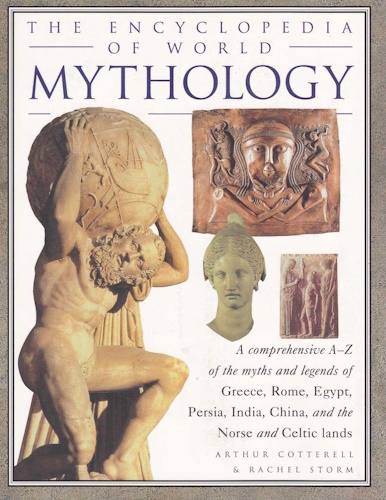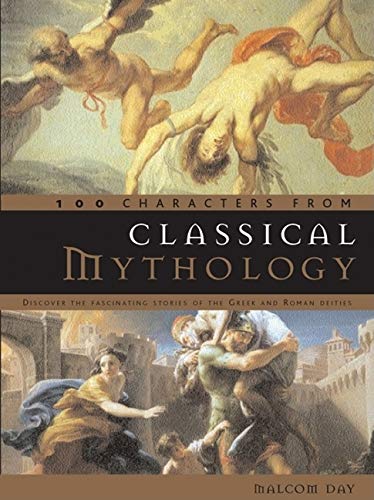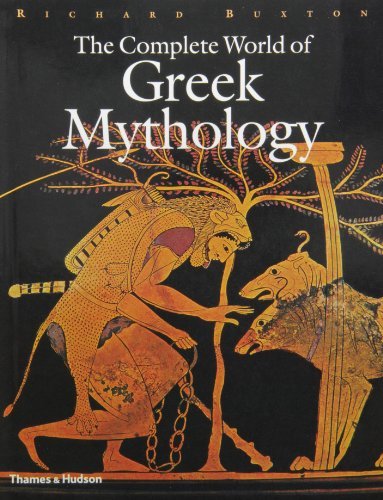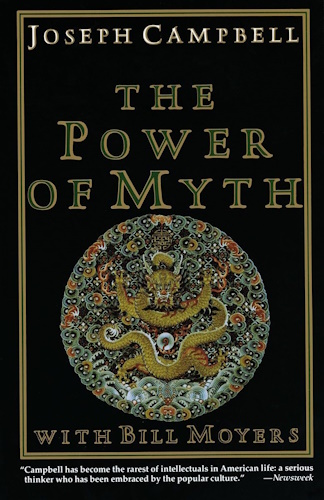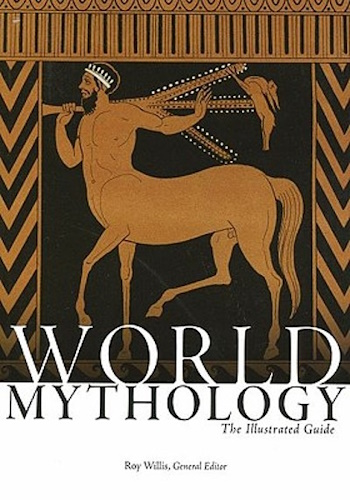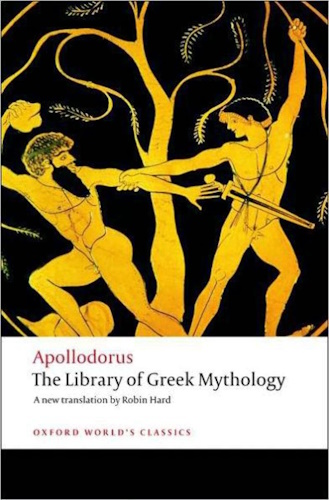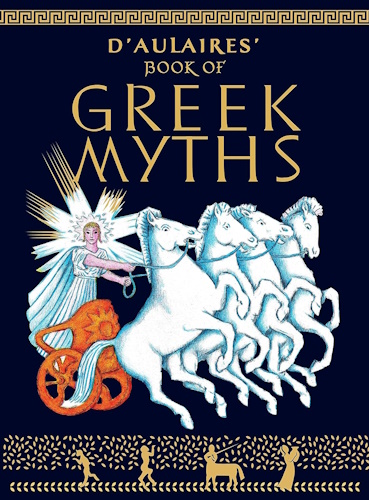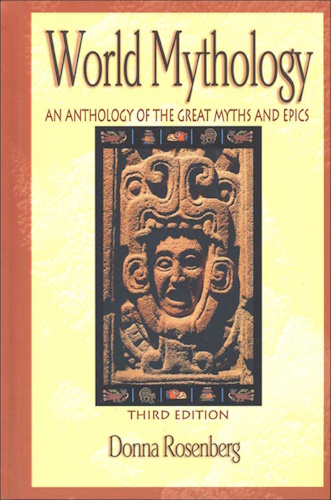
![]()
![]()
HUON OF BORDEAUX
WHEN Charlemagne grew old he felt the burden of government become heavier year by year, till at last he called together his high barons and peers to propose to abdicate the empire and the throne of France in favor of his sons, Charlot and Lewis.
The Emperor was unreasonably partial to his eldest son; he would have been glad to have had the barons and peers demand Charlot for their only sovereign; but that prince was so infamous, for his falsehood and cruelty, that the council strenuously opposed the Emperor's proposal of abdicating, and implored him to continue to hold a sceptre which he wielded with so much glory.
Amaury of Hauteville, cousin of Ganelon, and now head of the wicked branch of the house of Maganza, was the secret partisan of Charlot, whom he resembled in his loose morals and bad dispositions. Amaury nourished the most bitter resentment against the house of Guienne, of which the former Duke, Sevinus, had often rebuked his misdeeds. He took advantage of this occasion to do an injury to the two young children whom the Duke Sevinus had left under the charge of the Duchess Alice, their mother; and at the same time, to advance his interest with Charlot by increasing his wealth and power. With this view he suggested to the prince a new idea.
He pretended to agree with the opinion of the barons; he said that it would be best to try Charlot's capacity for government by giving him some rich provinces before placing him upon the throne; and that the Emperor, without depriving himself of any part of his realm, might give Charlot the investiture of Guienne. For although seven years had passed since the death of Sevinus, the young Duke, his son, had not yet repaired to the court of Charlemagne to render the homage due to his lawful sovereign.
We have often had occasion to admire the justice and wisdom of the advice which on all occasions the Duke Namo of Bavaria gave to Charlemagne, and he now discountenanced, with indignation, the selfish advice of Amaury. He represented to the Emperor the early age of the children of Sevinus, and the useful and glorious services of their late father, and proposed to Charlemagne to send two knights to the Duchess at Bordeaux, to summon her two sons to the court of the Emperor, to pay their respects and render homage.
Charlemagne approved this advice, and sent two chevaliers to demand the two young princes of their mother. No sooner had the Duchess learned the approach of the two knights, than she sent distinguished persons to receive them; and as soon as they entered the palace she presented herself before them, with her elder and younger sons, Huon and Girard.
The deputies, delighted with the honors and caresses they received, accompanied with rich presents, left Bordeaux with regret and on their return represented to Charlemagne that the young Duke Huon seemed born to tread in the footsteps of his brave father, informing him that in three months the young princes of Guienne would present themselves at his court.
The Duchess employed the short interval in giving her sons her last instructions. Huon received them in his heart, and Girard gave as much heed to them as could be expected from one so young.
The preparations for their departure having been made, the Duchess embraced them tenderly, commending them to the care of Heaven, and charged them to call, on their way, at the celebrated monastery of Cluny, to visit the Abbot, the brother of their father. This Abbot, worthy of his high dignity, had never lost an opportunity of doing good, setting an example of every excellence, and making virtue attractive by his example.
He received his nephews with the greatest magnificence; and, aware how useful his presence might be to them with Charlemagne, whose valued counsellor he was, he took with them the road to Paris.
When Amaury learned what reception the two deputies of Charlemagne had received at Bordeaux, and the arrangements made for the visit of the young princes to the Emperor's court, he suggested to Charlot to give him a troop of his guards, with which he proposed to lay wait for the young men in the wood of Montlery, put them to death, and thereby give the prince Charlot possession of the duchy of Guienne.
A plan of treachery and violence agreed but too well with Charlot's disposition. He not only adopted the suggestion of Amaury, but insisted upon taking a part in it. They went out secretly, by night, followed by a great number of attendants, all armed in black, to lie in ambuscade in the wood where the brothers were to pass.
Girard, the younger of the two, having amused himself as he rode by flying his hawk at such game as presented itself, had ridden in advance of his brother and the Abbot of Cluny. Charlot, who saw him coming, alone and unarmed, went forth to meet him, sought a quarrel with him, and threw him from his horse with a stroke of his lance. Girard uttered a cry as he fell; Huon heard it, and flew to his defence, with no other weapon than his sword. He came up with him, and saw the blood flowing from his wound. "What has this child done to you, wretch!" he exclaimed to Charlot. "How cowardly to attack him when unprepared to defend himself!" "By my faith," said Charlot, "I mean to do the same by you. Know that I am the son of Duke Thierry of Ardennes, from whom your father, Sevinus, took three castles; I have sworn to avenge him, and I defy you." "Coward," answered Huon, "I know well the baseness that dwells in your race; worthy son of Thierry, use the advantage that your armor gives you; but know that I fear you not." At these words Charlot had the wickedness to put his lance in rest, and to run upon Huon, who had barely time to wrap his arm in his mantle. With this feeble buckler he received the thrust of the lance. It penetrated the mantle, but missed his body. Then, rising upon his stirrups, Sir Huon struck Charlot so terrible a blow with his sword that the helmet was cleft asunder, and his head too. The dastardly prince fell dead upon the ground.
Huon now perceived that the wood was full of armed men. He called the men of his suite, and they hastily put themselves in order, but nobody issued from the wood to attack him. Amaury, who saw Charlot's fall, had no desire to compromit himself; and, feeling sure that Charlemagne would avenge the death of his son, he saw no occasion for his doing anything more at present. He left Huon and the Abbot of Cluny to bind up the wound of Girard, and, having seen them depart and resume their way to Paris, he took up the body of Charlot, and, placing it across a horse, had it carried to Paris, where he arrived four hours after Huon.
The Abbot of Cluny presented his nephew to Charlemagne, but Huon refrained from paying his obeisance, complaining grievously of the ambush which had been set for him, which he said could not have been without the Emperor's permission. Charlemagne, surprised at a charge which his magnanimous soul was incapable of meriting, asked eagerly of the Abbot what were the grounds of the complaints of his nephew. The Abbot told him faithfully all that had happened, informing him that a coward knight, who called himself the son of Thierry of Ardennes, had wounded Girard, and run upon Huon, who was unarmed; but by his force and valor he had overcome the traitor, and left him dead upon the plain.
Charlemagne indignantly disavowed any connection with the action of the infamous Thierry, congratulated the young Duke upon his victory, himself conducted the two brothers to a rich apartment, stayed to see the first dressing applied to the wound of Girard, and left the brothers in charge of Duke Namo of Bavaria, who, having been a companion in arms of the Duke Sevinus, regarded the young men almost as if they were his own sons.
Charlemagne had hardly quitted them when, returning to his chamber, he heard cries, and saw through the window a party of armed men just arrived. He recognized Amaury, who bore a dead knight stretched across a horse; and the name of Charlot was heard among the exclamations of the people assembled in the court-yard.
Charles's partiality for this unworthy son was one of his weaknesses. He descended in trepidation to the court-yard, ran to Amaury, and uttered a cry of grief on recognizing Charlot. "It is Huon of Bordeaux," said the traitor Amaury, "who has massacred your son before it was in my power to defend him." Charlemagne, furious at these words, seized a sword, and flew to the apartment of the two brothers to plunge it into the heart of the murderer of his son. Duke Namo stopped his hand for an instant, while Charles told him the crime of which Huon was accused. "He is a peer of the realm," said Namo, "and if he is guilty, is he not here in your power, and are not we peers the proper judges to condemn him to death? Let not your hand be stained with his blood." The Emperor, calmed by the wisdom of Duke Namo, summoned Amaury to his presence. The peers assembled to hear his testimony, and the traitor accused Huon of Bordeaux of having struck the fatal blow without allowing Charlot an opportunity to defend himself, and though he knew that his opponent was the Emperor's eldest son.
The Abbot of Cluny, indignant at the false accusation of Amaury, advanced, and said, "By Saint Benedict, sire, the traitor lies in his throat. If my nephew has slain Charlot it was in his own defence, and after having seen his brother wounded by him, and also in ignorance that his adversary was the prince. Though I am a son of the Church," added the good Abbot, "I forget not that I am a knight by birth. I offer to prove with my body the lie upon Amaury, if he dares sustain it, and I shall feel that I am doing a better work to punish a disloyal traitor, than to sing lauds and matins."
Huon to this time had kept silent, amazed at the black calumny of Amaury; but now he stepped forth, and, addressing Amaury, said: "Traitor! darest thou maintain in arms the lie thou hast uttered?" Amaury, a knight of great prowess, despising the youth and slight figure of Huon, hesitated not to offer his glove, which Huon seized; then, turning again to the peers, he said: "I pray you let the combat be allowed me, for never was there a more legitimate cause." The Duke Namo and the rest, deciding that the question should be remitted to the judgment of Heaven, the combat was ordained, to which Charlemagne unwillingly consented. The young Duke was restored to the charge of Duke Namo, who the next morning invested him with the honors of knighthood, and gave him armor of proof, with a white shield. The Abbot of Cluny, delighted to find in his nephew sentiments worthy of his birth, embraced him, gave him his blessing, and hastened to the church of St. Germains to pray for him, while the officers of the king prepared the lists for the combat.
The battle was long and obstinate. The address and agility of Huon enabled him to avoid the terrible blows which the ferocious Amaury aimed at him. But Huon had more than once drawn blood from his antagonist. The effect began to be perceived in the failing strength of the traitor; at last he threw himself from his horse, and kneeling, begged for mercy. "Spare me," he said, "and I will confess all. Aid me to rise, and lead me to Charlemagne." The brave and loyal Huon, at these words, put his sword under his left arm, and stretched out his right to raise the prostrate man, who seized the opportunity to give him a thrust in the side. The hauberk of Huon resisted the blow, and he was wounded but slightly. Transported with rage at this act of baseness, he forgot how necessary for his complete acquittal the confession of Amaury was, and without delay dealt him the fatal blow.
Duke Namo and the other peers approached, had the body of Amaury dragged forth from the lists, and conducted Huon to Charlemagne. The Emperor, however, listening to nothing but his resentment and grief for the death of his son, refused to be satisfied; and under the plea that Huon had not succeeded in making his accuser retract his charge seemed resolved to confiscate his estates and to banish him forever from France. It was not till after long entreaties on the part of Duke Namo and the rest that he consented to grant Huon his pardon, under conditions which he should impose.
Huon approached, and knelt before the Emperor, rendered his homage, and cried him mercy for the involuntary killing of his son. Charlemagne would not receive the hands of Huon in his own, but touched him with his sceptre, saying, "I receive thy homage, and pardon thee the death of my son, but only on one condition. You shall go immediately to the court of the Sultan Gaudisso; you shall present yourself before him as he sits at meat; you shall cut off the head of the most illustrious guest whom you shall find sitting nearest to him; you shall kiss three times on the mouth the fair princess, his daughter, and you shall demand of the Sultan, as token of tribute to me, a handful of the white hair of his beard, and four grinders from his mouth."
These conditions caused a murmur from all the assembly. "What!" said the Abbot of Cluny; "slaughter a Saracen prince without first offering him baptism?" "The second condition is not so hard," said the young peers, "but the demand that Huon is bound to make of the old Sultan is very uncivil, and will be hard to obtain."
The Emperor's obstinacy when he had once resolved upon a thing is well known. To the courage of Huon nothing seemed impossible. "I accept the conditions," said he, silencing the intercessions of the old Duke of Bavaria; "my liege, I accept my pardon at this price. I go to execute your commands, as your vassal and a peer of France."
The Duke Namo and Abbot of Cluny, being unable to obtain any relaxation of the sentence passed by Charlemagne, led forth the young Duke, who determined to set out at once on his expedition. All that the good Abbot could obtain of him was, that he should prepare for this perilous undertaking by going first to Rome, to pay his homage to the Pope, who was the brother of the Duchess Alice, Huon's mother, and from him demand absolution and his blessing. Huon promised it, and forthwith set out on his way to Rome.
-
Urantia Book, 44:0.11 - The Celestial Artisans
Never in your long ascendancy will you lose the power to recognize your associates of former existences. Always, as you ascend inward in the scale of life, will you retain the ability to recognize and fraternize with the fellow beings of your previous and lower levels of experience. Each new translation or resurrection will add one more group of spirit beings to your vision range without in the least depriving you of the ability to recognize your friends and fellows of former estates.
-
Princess Bride 1987 Wallace Shawn (Vizzini) and Mandy Patinkin (Inigo Montoya)
Vizzini: HE DIDN'T FALL? INCONCEIVABLE.
Inigo Montoya: You keep using that word. I do not think it means what you think it means. -
Urantia Book, 117:4.14 - The Finite God
And here is mystery: The more closely man approaches God through love, the greater the reality -- actuality -- of that man. The more man withdraws from God, the more nearly he approaches nonreality -- cessation of existence. When man consecrates his will to the doing of the Father's will, when man gives God all that he has, then does God make that man more than he is.
-
Urantia Book, 167:7.4 - The Talk About Angels
"And do you not remember that I said to you once before that, if you had your spiritual eyes anointed, you would then see the heavens opened and behold the angels of God ascending and descending? It is by the ministry of the angels that one world may be kept in touch with other worlds, for have I not repeatedly told you that I have other sheep not of this fold?"
-
Urantia Book, Foreword - 0:12.12 - The Trinities
But we know that there dwells within the human mind a fragment of God, and that there sojourns with the human soul the Spirit of Truth; and we further know that these spirit forces conspire to enable material man to grasp the reality of spiritual values and to comprehend the philosophy of universe meanings. But even more certainly we know that these spirits of the Divine Presence are able to assist man in the spiritual appropriation of all truth contributory to the enhancement of the ever-progressing reality of personal religious experience—God-consciousness.
-
Urantia Book, 1:4.3 - The Mystery Of God
When you are through down here, when your course has been run in temporary form on earth, when your trial trip in the flesh is finished, when the dust that composes the mortal tabernacle "returns to the earth whence it came"; then, it is revealed, the indwelling "Spirit shall return to God who gave it." There sojourns within each moral being of this planet a fragment of God, a part and parcel of divinity. It is not yet yours by right of possession, but it is designedly intended to be one with you if you survive the mortal existence.
-
Urantia Book, 1:4.1 - The Mystery Of God
And the greatest of all the unfathomable mysteries of God is the phenomenon of the divine indwelling of mortal minds. The manner in which the Universal Father sojourns with the creatures of time is the most profound of all universe mysteries; the divine presence in the mind of man is the mystery of mysteries.
-
Urantia Book, 1:4.6 - The Mystery Of God
To every spirit being and to every mortal creature in every sphere and on every world of the universe of universes, the Universal Father reveals all of his gracious and divine self that can be discerned or comprehended by such spirit beings and by such mortal creatures. God is no respecter of persons, either spiritual or material. The divine presence which any child of the universe enjoys at any given moment is limited only by the capacity of such a creature to receive and to discern the spirit actualities of the supermaterial world.
-
Urantia Book, 11:0.1 - The Eternal Isle Of Paradise
Paradise is the eternal center of the universe of universes and the abiding place of the Universal Father, the Eternal Son, the Infinite Spirit, and their divine co-ordinates and associates. This central Isle is the most gigantic organized body of cosmic reality in all the master universe. Paradise is a material sphere as well as a spiritual abode. All of the intelligent creation of the Universal Father is domiciled on material abodes; hence must the absolute controlling center also be material, literal. And again it should be reiterated that spirit things and spiritual beings are real.
-
Urantia Book, 50:6.4 - Planetary Culture
Culture presupposes quality of mind; culture cannot be enhanced unless mind is elevated. Superior intellect will seek a noble culture and find some way to attain such a goal. Inferior minds will spurn the highest culture even when presented to them ready-made.
-
Urantia Book, 54:1.6 - True And False Liberty
True liberty is the associate of genuine self-respect; false liberty is the consort of self-admiration. True liberty is the fruit of self-control; false liberty, the assumption of self-assertion. Self-control leads to altruistic service; self-admiration tends towards the exploitation of others for the selfish aggrandizement of such a mistaken individual as is willing to sacrifice righteous attainment for the sake of possessing unjust power over his fellow beings.
-
Urantia Book, 54:1.9 - True And False Liberty
How dare the self-willed creature encroach upon the rights of his fellows in the name of personal liberty when the Supreme Rulers of the universe stand back in merciful respect for these prerogatives of will and potentials of personality! No being, in the exercise of his supposed personal liberty, has a right to deprive any other being of those privileges of existence conferred by the Creators and duly respected by all their loyal associates, subordinates, and subjects.
-
Urantia Book, 54:1.8 - True And False Liberty
There is no error greater than that species of self-deception which leads intelligent beings to crave the exercise of power over other beings for the purpose of depriving these persons of their natural liberties. The golden rule of human fairness cries out against all such fraud, unfairness, selfishness, and unrighteousness.
